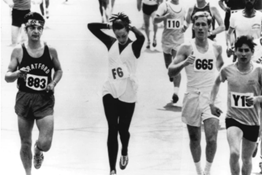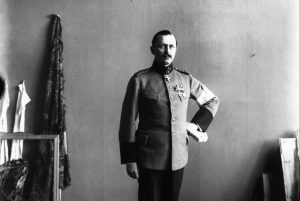Running outside, chasing your friends, playing with Legos–these are things you might remember doing as a young child. However, from the late 1700s to the mid-1800s in Britain, being paid meager wages and working for as much as sixteen-hour days with dangerous mining equipment was the norm for many young, British children. During the Industrial Revolution this was an ugly reality. Many working-class families found it necessary to have their children work alongside them in the mines. Because of their size and cooperation, and because it was easier to pay them less, these children were paid about five times less than men for the same number of hours worked, which for these young miners could be up to fourteen-hour days.1

Before the Mines and Collieries Act of 1842, children as young as four were allowed to work in the mines.2 Just imagine such young children running around a dark coal mine–it simply does not sound safe at all. These children were hired to be able to get into those hard to reach places that fully grown adults were unable to get into. During the Industrial Revolution, coal was a major source of energy, and was extremely important because it burned hotter than wood charcoal. The primary use of coal was used as a source of energy, and used to power the steam engines of factories, where many other children also worked. Because of its high demand and necessity, it helped increase jobs for the working people. Because of these factories, major industrial cities such as Birmingham, Manchester, and Liverpool, grew at a fast pace from small villages into large cities.3

In British coal mines, children typically had one of three jobs. Trappers, typically the youngest, would open and close the wooden doors–also called trap doors–to allow fresh air to flow through the mine. These trappers would sit in darkness for almost twelve hours at a time. It may seem a simple task, but if one of these little ones fell asleep, the job could become very dangerous. Other jobs were the tasks of hurrier and thruster. These jobs were usually given to older children and women. These workers had to pull and push tubs that were full of coal along the roadways, all the way to the pit bottom. The hurriers would be harnessed to the tub, and the thrusters would then help hurriers by pushing these tubs of coal. The thruster would have to push tubs of coal weighing over 600 kilograms from behind with their hands and the tops of their heads. The thrusters, mainly older girls, had to carry these baskets of dug coal, which were much too heavy for them. Because of their heavy weight, it would then cause their young, growing bodies to develop with deformities. The last typical job was the getter. This one was typically assigned to the oldest and strongest, usually grown men or strong, older teens. This job required them to work at the coal face, cutting the coal from the seam with a pickaxe. This was typically the only job where they would use a candle or safety lamp for light, as cutting the coal required it.4 Although the work at the coal mine may not seem very difficult, it was very dangerous. In one unnamed coal mine, 58 of the total 349 deaths in one year involved children thirteen years or younger.5

Those who worked in coal mines–whether below or above ground–were exposed to life-threatening working conditions that could ultimately be detrimental to their health. Children, mainly boys as young as eight, worked as breakers. Here, the coal was crushed, washed, and sorted according to size. The coal would come down a chute and along a moving belt. These breaker boys would work in what was called the picking room. Here, they would work hunched over for ten hours a day, six days a week, sorting the rock and slate from the coal with their bare hands. If their attention even drifted for a second, they could lose a finger in the machinery.6 The work also resulted in their exposure to a large amount of dust. In some cases, the dust was so dense that their vision would be obstructed. This dust would also get into their lungs, which needless to say, was terrible for their health.7 These children sometimes even had a person prodding or kicking them into obedience to make sure their attention did not stray.
These working conditions for children continued until the United Kingdom’s Parliament passed the Mines and Collieries Act of 1842. The act included a report that informed the public about how children as young as five years old were working as trappers for “twelve hours a day and two pennies a day.”8 It was not until the Children’s Employment (Mines) Report came out alongside it in 1842 that Parliament passed the act that all boys and girls under the age of ten were not allowed to work in the coal mines.9 Even after this law prevented children under fourteen from working in the mines, people still found ways around it. For example, since some regions did not have a compulsory registration of birth, someone could easily lie and claim that these boys were simply “small for their age.” Finally, with this legislation came the snowball effect of humanitarians and a larger awareness of health and safety regulations for workers, which led to the start of the end of child labor in England.10
- Children’s Employment Commission First Report of the Commissioners (Mines), (Halifax: Irish University Press, 1842), 77-81. ↵
- Encyclopedia Britannica.com, December 2012, s.v. “Anthony Ashley Cooper, 7th earl of Shaftesbury,” by Editors of Encyclopedia Britannica. ↵
- New World Encyclopedia, February 2017, s.v., “Child Labor,” by New World Encyclopedia Contributors. ↵
- Great Britain Commissioners, The Condition and Treatment of the Children employed in the Mines and Colliers of the United Kingdom Carefully compiled from the appendix to the first report of the Commissioners With copious extracts from the evidence, and illustrative engravings, (London: 1842), 19-59. ↵
- J. M. Mason, “Protection of Children,” The Westminster Review Vol. 36 (1841): 66. ↵
- Jane Humphries, “Short stature among coal-mining children: A comment,” Economic History Review 1, no. 3 (1997): 533. ↵
- Jane Humphries, “Short stature among coal-mining children: A comment,” Economic History Review 1, no. 3 (1997): 535. ↵
- Encyclopedia Britannica.com, December 2012, s.v. “Anthony Ashley Cooper, 7th earl of Shaftesbury,” by Editors of Encyclopedia Britannica. ↵
- “Early Factory Legislation.” Parliament. UK. (April 9th, 2017). ↵
- J. M. Mason, “Protection of Children,” The Westminster Review Vol. 36 (1841); 45-47. ↵



98 comments
ronnie dixon
what year is this picture?
Caily Torres
This is a sad reality that still happens in parts of the world today. Children and women are taken advantage of with jobs that a typical (large) man cannot do and pay them the lowest wage possible. The results from this labor can have detrimental effects on their health and life span. It is cruel and unfair that they had to go through this, taking away their childhood. Even when the law prevented children under the age of 10 from working, people still found a loophole. However, the legislation illuminated the issue at hand and started the end of child labor in England.
sage sankey
reading this broke my heart a million times over again, it is sick that the children of young ages were put through that reading this made me a better person so I guess I can take that out of it
Lesley Martinez
This is such a sad reality. It is incredibly interesting how we know about this type of child labor from the 16th century and to know that certain circumstances still occur today. It sounds dangerous and shocking to know that children who were involved lost their lives and others had to live with health consequences. It seems that people find a way around laws, but I’m glad the United Kingdom passed the act that prohibited industries from allowing children to work as an attempt to prevent this. Great article!
Michael Thompson
Interesting story about the working conditions for children, in reality wasn’t too long ago. It’s hard to imagine five year old’s working 12 hour shifts, and then dying even more so. But the fact that it did happen, and so many lives were lost and ruined, for little money, is devastating. It really should be looked at as a tragedy, and it’s sad it’s given less attention.
Liam Morrison
While reading this,I learned that for years, people did not care for the health of people who worked in coal mines. I find it so unfair how children were put to work in such horrendous conditions while our generation is able to do whatever we like and live a normal childhood. The explanation of the history of coal mining was very good. We are very lucky that all the health and safety sorted this out before it got to us.
Olivia Tijerina
The authors message was that from the life of British children had a like completely different from the United State’s children. Why? one reason behind the difference was because for British it was their industrial revolution that had kept them booming in their economy. Especially if the working class needed the money. Consequences that can from their actions was that not only young adults die, it was their children that dies from their labors as well. The article, with the abundance of detail , measuring the conditions, expressed more into the article’s meaning.
Ivonne Orozco
Everytime I read articles where peoples rights were mistreated, it makes me upset. When I read this article it made me upset to see how such young children would have to go through things just because people didn’t care about putting the children in danger , breaks my heart.This article was very well written. I’m glad that usually when I see children now, it is nothing like how It used to be.
Kasandra Ramirez Ferrer
I have always known that society in the past was not a place where people were mistreated equally and even affected the way they lived because others saw them as a minority. I always knew how child labor was years ago but I never really acknowledge how bad it was until I read stories and saw pictures of children living and working under hideous conditions. luckily in today’s society has forbidden children to work at a young age until they are 16, also health policies have changed the environment of the workplace progressively compare to how 10-year-old kids used to carry and push coal. However, it would never change the fact that many children died under these conditions.
Roberto Rodriguez
It is always really weird to look back at the past and see how human rights were not always universally accepted or even thought about. It is something that we really take for granted now and it is important to remember just how far we have come from. It is sad that so many young people had to work under such oppressive work conditions, especially the horrible jobs that they were assigned. This article made me feel a lot of empathy for all of the young people involved, even those that were able to leave or quit their jobs, still had irreversible life-threatening health conditions from their work.